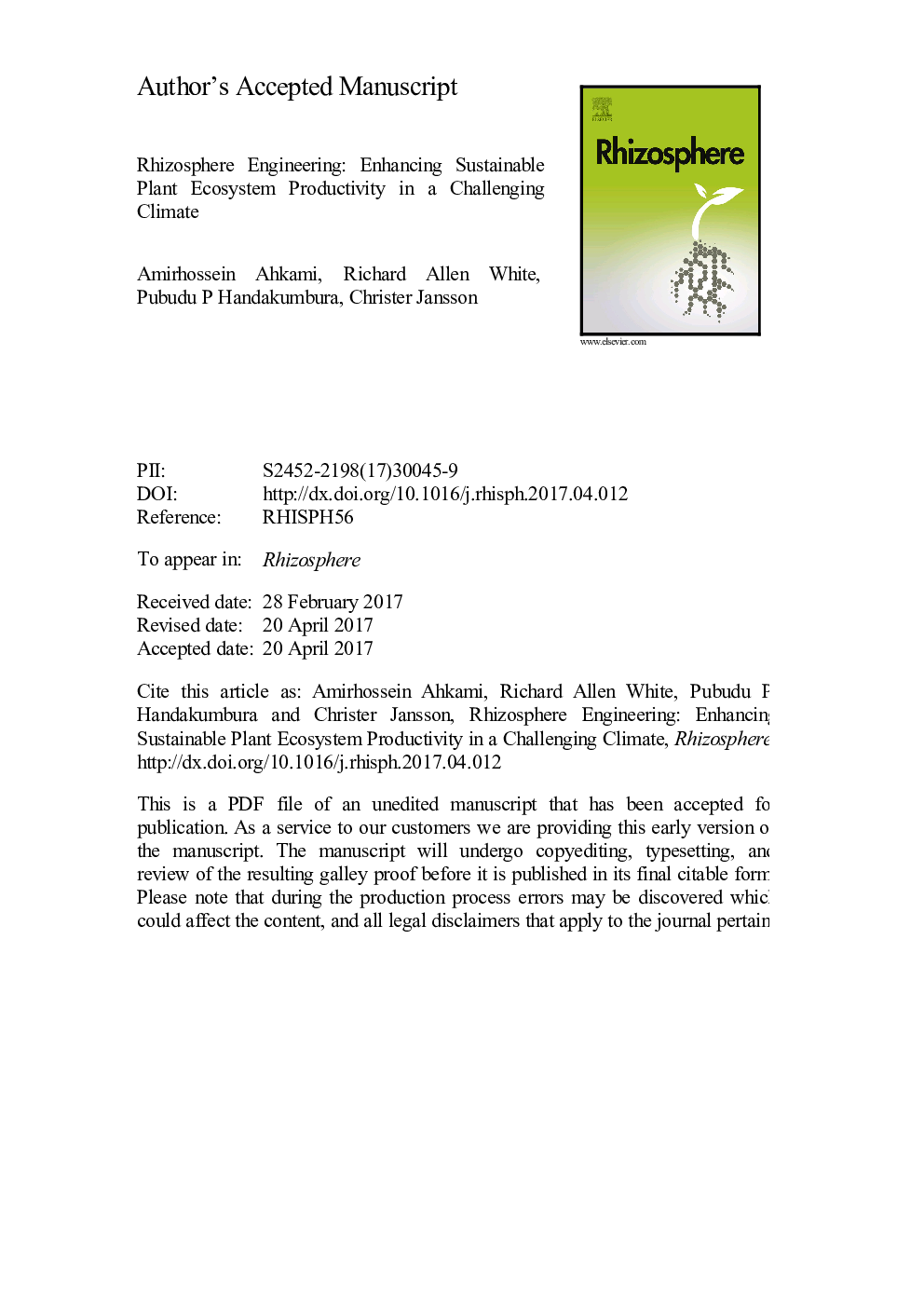| Article ID | Journal | Published Year | Pages | File Type |
|---|---|---|---|---|
| 5762823 | Rhizosphere | 2017 | 44 Pages |
Abstract
The rhizosphere is arguably the most complex microbial habitat on earth, comprising an integrated network of plant roots, soil and a diverse microbial consortium of bacteria, archaea, viruses, and microeukaryotes. Understanding, predicting and controlling the structure and function of the rhizosphere will allow us to harness plant-microbe interactions and other rhizosphere activities as a means to increase or restore plant ecosystem productivity, improve plant responses to a wide range of environmental perturbations, and mitigate effects of climate change by designing ecosystems for long-term soil carbon storage. Here, we review critical knowledge gaps in rhizosphere science, and how mechanistic understanding of rhizosphere interactions can be leveraged in rhizosphere engineering efforts with the goal of maintaining sustainable plant ecosystem services for food and bioenergy production in an ever changing global climate.
Keywords
Related Topics
Life Sciences
Agricultural and Biological Sciences
Agronomy and Crop Science
Authors
Amir H. Ahkami, Richard III, Pubudu P. Handakumbura, Christer Jansson,
